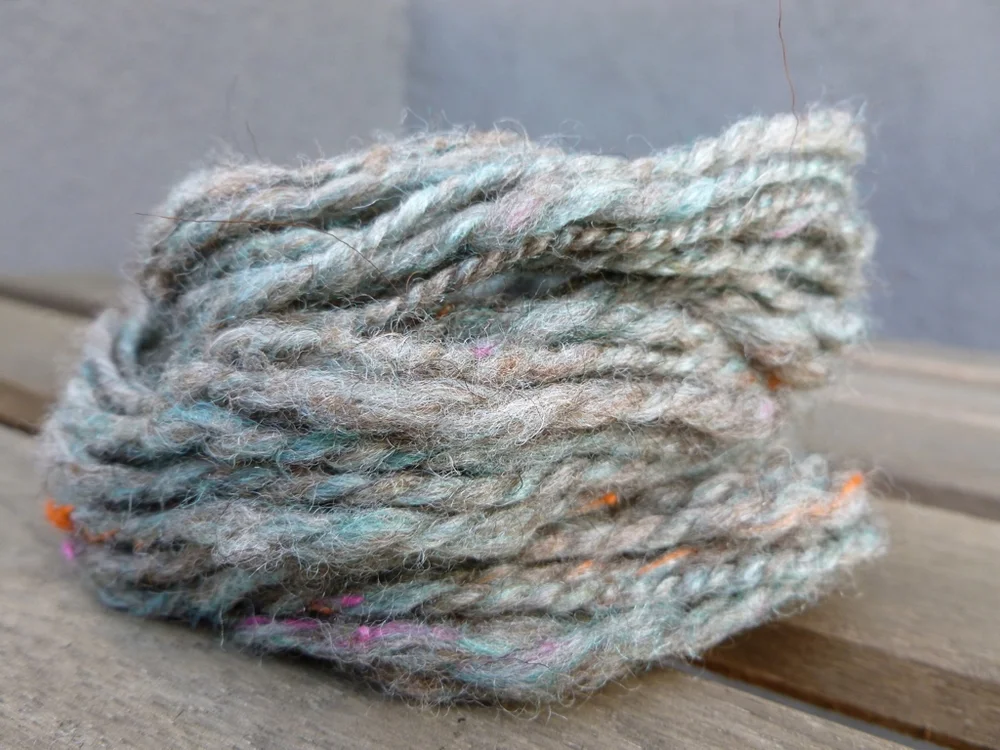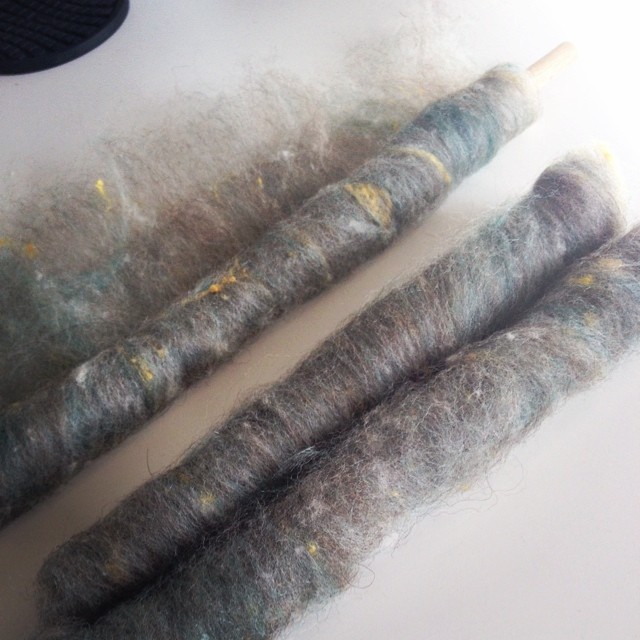How To Make and Spin Fauxlags
/What are rolags and what are fauxlags? The answer to both of these questions is happy little burritos of fiber. They look the same, spin the same, and create the same kind of yarn - an airy woolen handspun. These preps also have added benefit of being quick to spin since the speedy long-draw or a variant is a must to easily draft them. Plus, they’re fun to to make and spin.
The giant difference between the two is how they’re made. Traditionally, rolags are made on hand cards or blending boards and rolled off into a tube. Or they can come straight off a drum carder. Fauxlags are generally made from pre-made batts, carded roving, or top. The only tool you need to make a fauxlag is a long smooth stick-like object such as a dowel, a knitting needle, or a chopstick. Fauxlags are easier to make than rolags because you don’t have to learn how to use hand cards. Plus, a simple dowel is much cheaper than a drum carder (I still want one though), a blending board, or hand cards. Making fauxlags is also an inexpensive way to see if you like working with this prep before investing in dedicated tools for rolags.
Let’s get rolling!
To make fauxlags, you’ll need fiber - roving, top, or a batt all work - and something long and smooth to wrap it around. Dowels, knitting needles, and chopsticks all work.
I’m using an 8” dowel and a Fantasy Batt from GwenErin Natural Fibers.
Before we get down to tearing and rolling, we’ll need to prep the fiber. If you’re working with a dense, thick batt, loosen up the fiber by pulling on the sides. We’re not trying to tear it into strips yet (unless you want to change up the colors or textures), just thin out the batt so it’s easier to work with. Fluffing up the fibers helps with roving/top too if it’s compacted or slightly felted.
Before we start striping the batt, pull out a few strands to measure staple length. If the fiber is 3” long, you’ll want to space your hands at least that far apart. Any closer and the batt/roving won’t separate because you’re holding both ends of the staple.
Batts can be difficult to tear evenly and the dowel lets you hold the batt evenly across it’s width for a neater edge. Hold down the dowel with one hand and pull the batt into strips with the other. It’s totally okay if the strips don’t have a clean edge or come away in clumps. Before you roll, you can stretch and pull them into a uniform piece.
If you’re working with roving, you can skip the dowel for this step. Just grab the fiber between your hands and start pulling it into chunks.
This is the same piece that was torn off in the above photo. I tugged and pulled it out to even the edges and make it easier to roll. When you’re happy with the shape and distribution, put the dowel on the bottom edge. Wrap the edge around the dowel and start rolling. If you're having a hard time holding the bottom edge, you can use a second smaller dowel to hold it in place.
After the fiber is all wrapped up, I like to roll it a few more times with a little extra pressure. Those last few rolls secure the outside edge of the strip and create a firmer fauxlag. I’m not trying to create a super dense prep - that would be hard to draft. The right amount of pressure keeps the fauxlag squishy yet firm which stops it from collapsing during spinning.
The last step is slipping the rolag off the dowel. Now repeat these steps to your heart’s content.
Here’s my finished batch. I got 9 fauxlags from this 1.1 ounce batt. The first two I made are a little thicker because I didn’t roll them as tightly - didn’t make any difference when I spun them up.
Time to spin!
Pick an end and slowly pull it out to pre-draft the fauxlag like so. I draft just enough to join a piece to the leader or the previous fauxlag. Since the fibers are all rolled up together, long-draw is the best way to draft these beauties.
Thanks to the magic of tripods, cameras, and video editing software, I was able to put together a video of the spinning process. I hope this helps answer any questions about how to spin fauxlags and rolags. It’s my first video tutorial so let me know what you think!















































